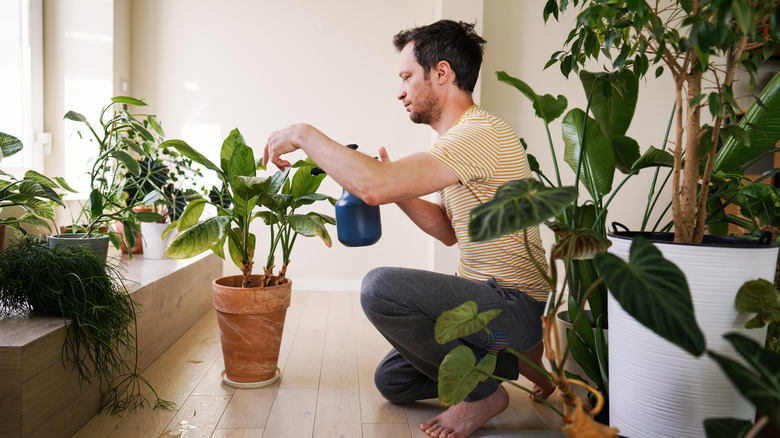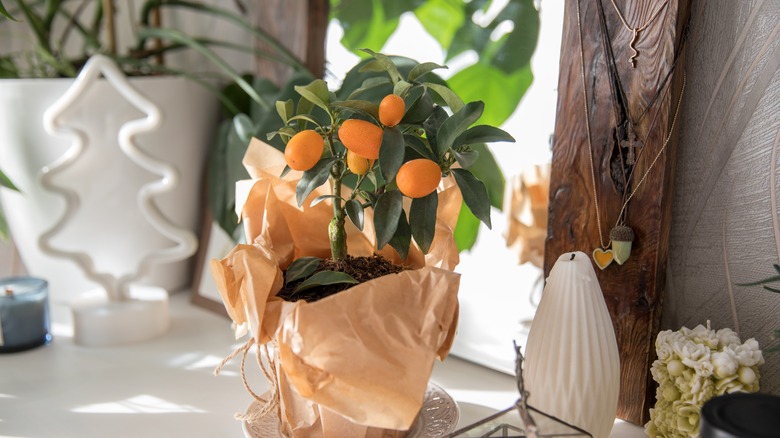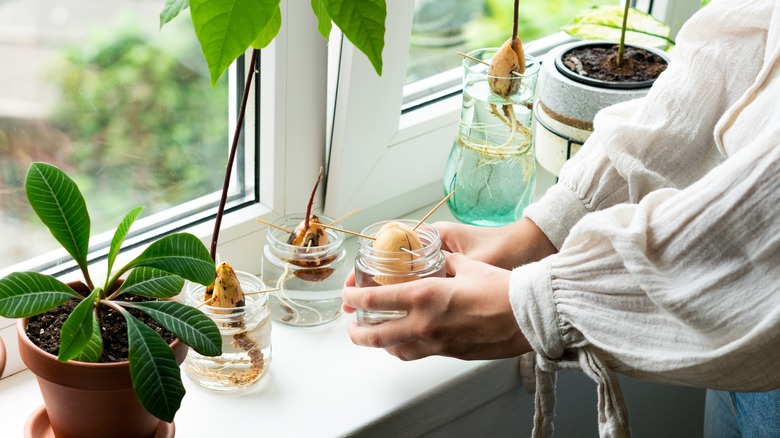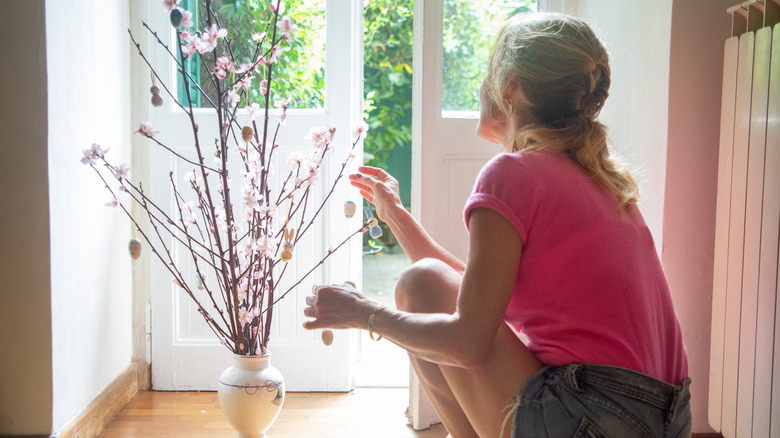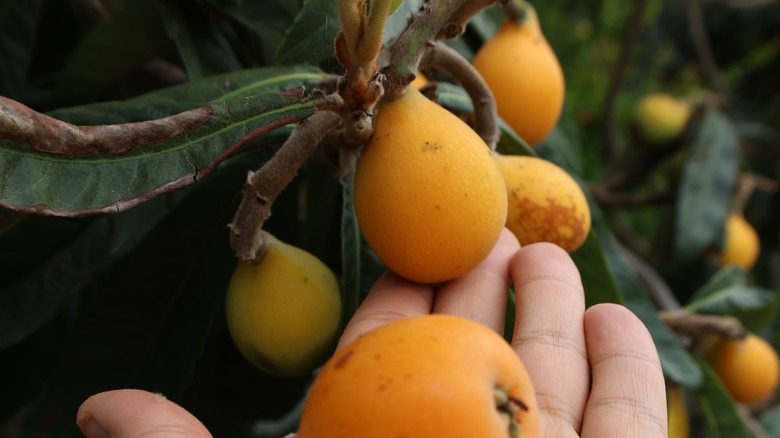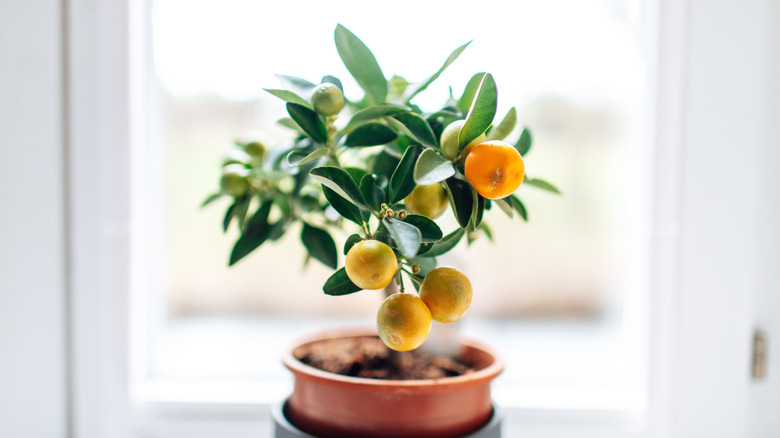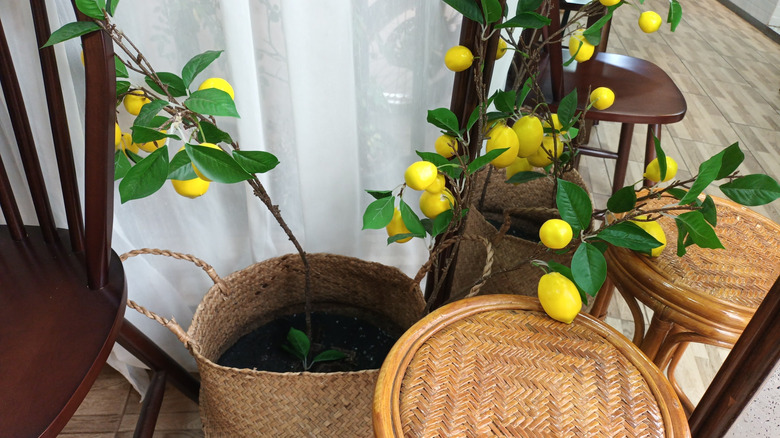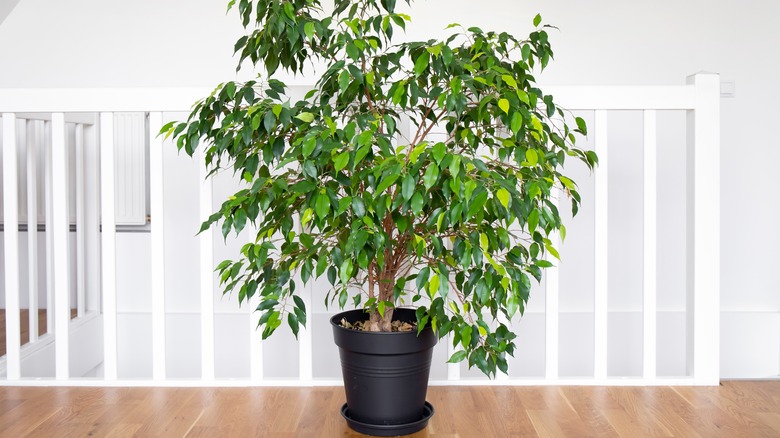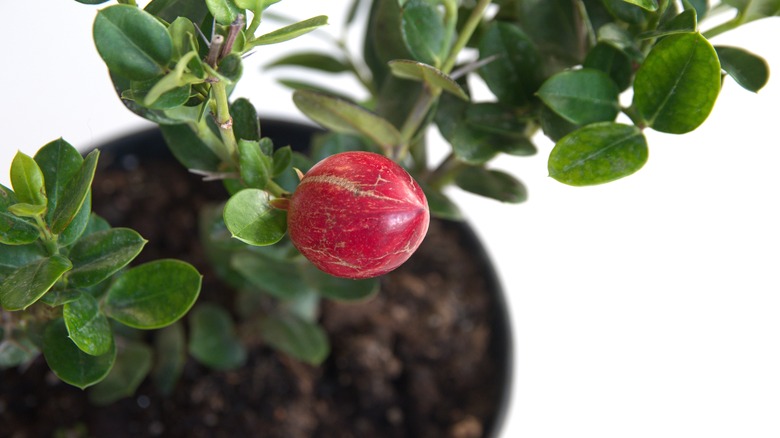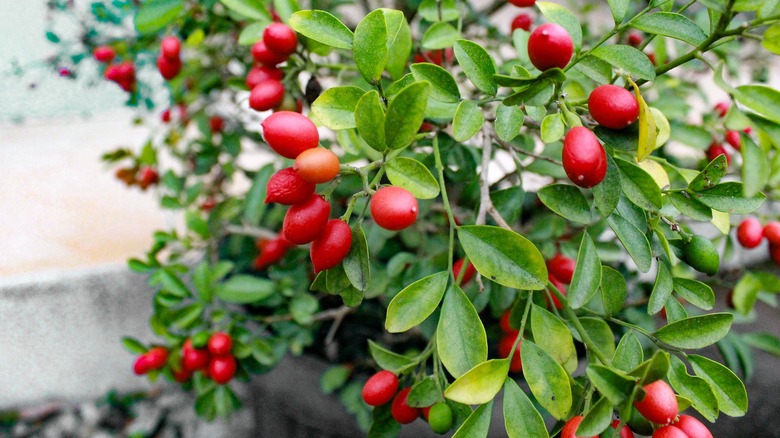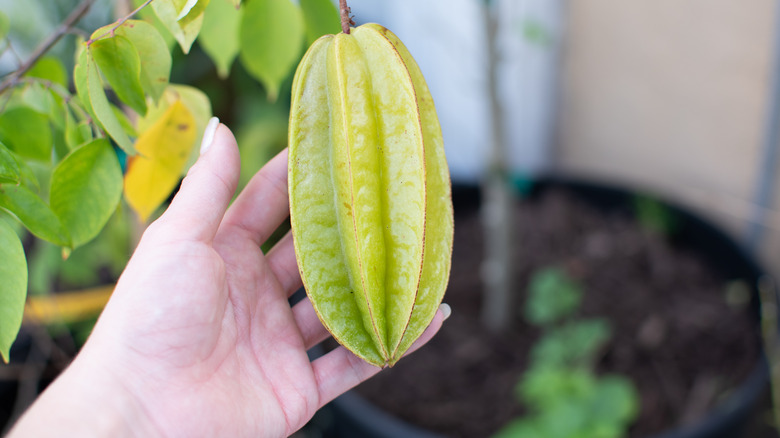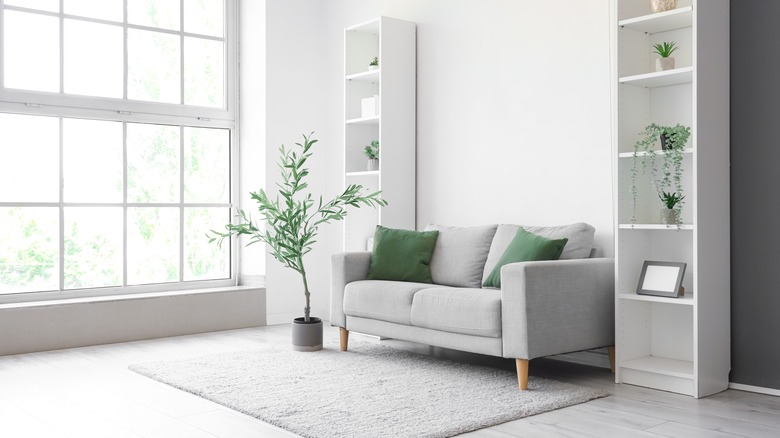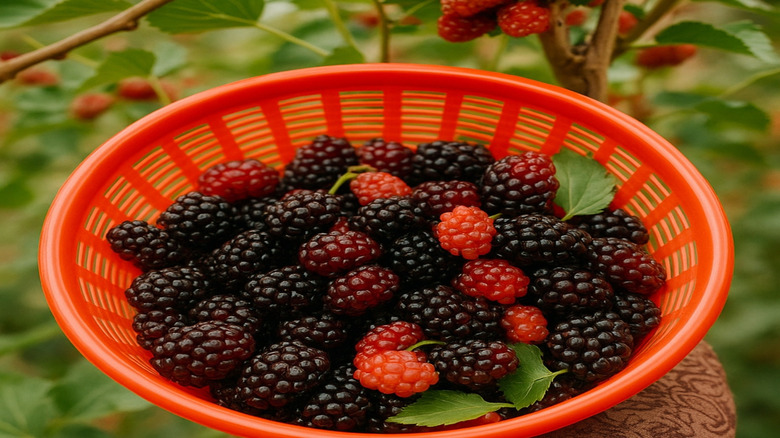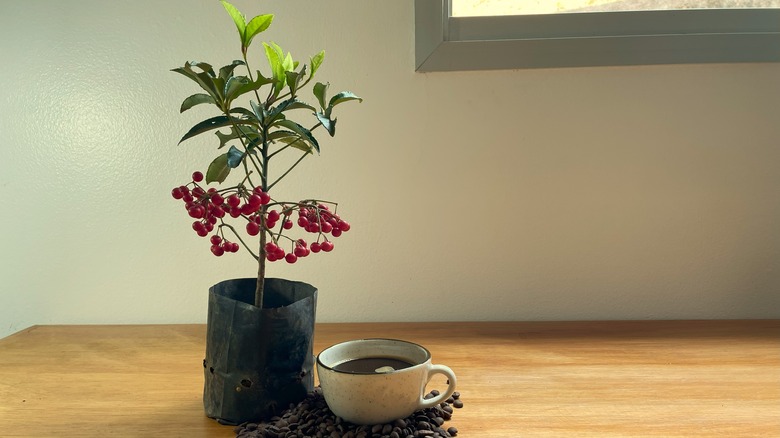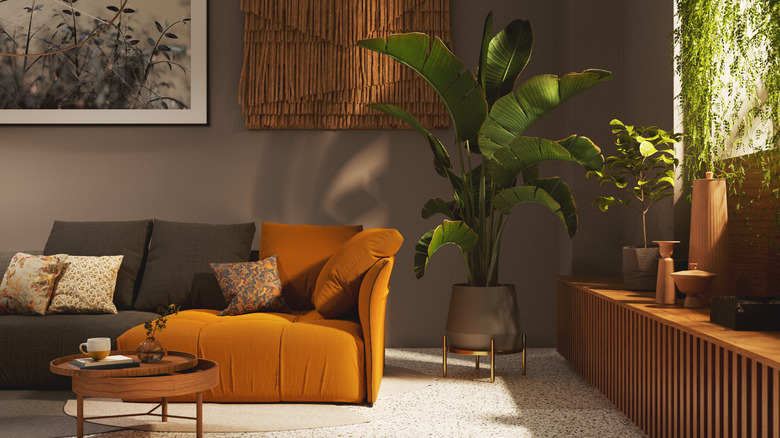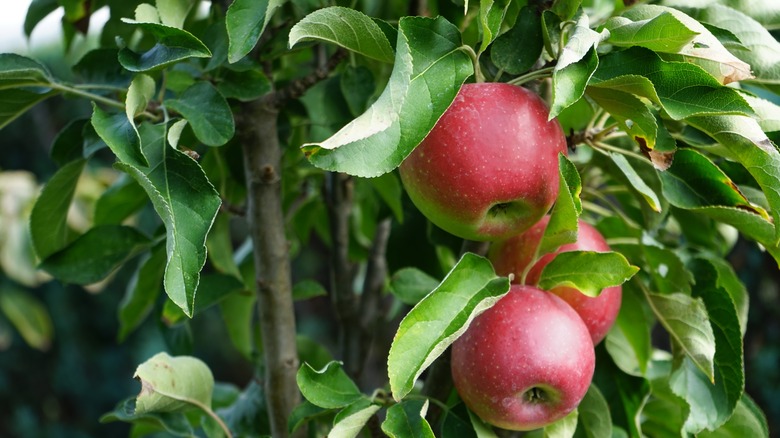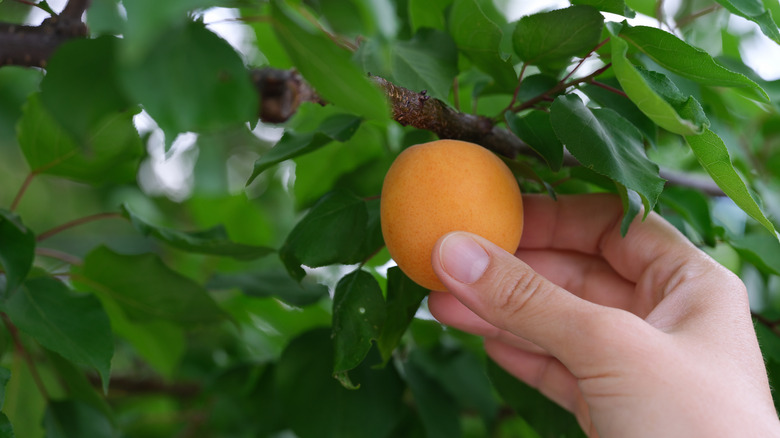19 Indoor Fruit Trees You Can Grow Indoors For Fresh Produce Year-Round
A great way to enjoy eating delicious plants while not having to be outdoors is to grow fruit trees inside your house. However, not all fruit-bearing plants will work in your home, especially large trees like most apple and pear species, which can reach higher than some ceilings. Instead, stick to kumquats, figs, and many dwarf varieties since they are included in the 19 fruit trees you can grow indoors for fresh produce year-round.
When it comes to indoor growing, there are several factors you need to account for, including watering, soil care, pollination, and sunlight exposure. Every plant has a different watering schedule, so you'll need to make sure you follow the recommended amounts and times, including misting when you need to create humidity. Soil and root care are important as well with your indoor gardening. Without the proper care, your plants won't produce fruit or can develop issues like yellow leaves or root rot. While some of these trees are self-pollinating, some may require additional help and should be placed outside for birds and insects to help their blooming process or employ mechanical pollen transfer methods. It's also important to remember that some fruit trees can take years to mature and grow fruit, but with enough patience and the right care, you'll enjoy your fruit tree for years to come.
Kumquat tree
Kumquat trees (Citrus japonica) are a great sweet fruit to grow year-round inside your home. This acidic, juicy plant grows well in USDA Hardiness Zones 8 to 10, so you can recreate that environment with porous soil in a container placed in a bright, sunny spot near a window or on a balcony. This edible product doesn't involve peeling and works well in many food and drink recipes as well as on their own. The tree itself is a wonderful ornament in your home with its bright hanging fruit and beautiful green leaves.
Avocado tree
It's important to understand how to grow and care for an avocado tree (Persea americana) indoors. Just because this plant can be difficult to grow doesn't mean you can't give it a go. Either get a starter pack or grow from scratch with a pit and watch its satisfying growth process. Once large enough, transplant your tree into a pot with moist soil. Since it is optimal to grow in warm environments of hardiness zones 9 through 11, keep your plant near a sunny window to let it enjoy the sun for most of the day.
Dwarf persimmon tree
Japanese dwarf persimmon tree (Diospyros kaki) is an indoor fruit tree that produces fruit. These dwarf persimmon plants can do well in your indoor space since they thrive in the climates of USDA hardiness zones 7a through 10b and have the ability to handle a range of temperatures from 10 degrees to 100 degrees Fahrenheit. You'll need to make sure it is in a large enough pot with permeable soil near a sunny spot in your home. A Japanese dwarf persimmon has a delectable and creamy flavor with hints of vanilla and cinnamon.
Peach tree
Enjoy the perfect tree for indoor and outdoor planting that has pretty pink flowers by planting peach trees (Prunus persica). When looking at which variety of this species you'll want to choose, you'll choose a dwarf variety like Golden Glory, Bonanza, or Reliance. With juicy fruit that grows in zones 4 through 8, peach trees need a large container with well-drained soil to grow properly. This plant needs quite a bit of direct sunlight, so set it next to your sunniest window. However, you may need to temporarily place it outdoors for its winter chill requirement.
Loquat tree
As the fast-growing fruit tree you probably haven't heard of, loquats (Eriobotrya japonica) are a great edible plant to have in your home. Grown in USDA hardiness zones 8 through 11, this fruit tree can produce fruit for over 90 years as long as they are in well-drained soil with plenty of indirect sunlight. These trees don't only produce fruit but white flowers as well, making them a stunning addition to your indoor gardening. Prone to pest infestations, just remember to monitor and add preventative measures, such as netting around the fruit clusters.
Mandarin tree
New to the fruit tree game? No worries because mandarins (Citrus reticulata) are a low-maintenance fruit tree that beginners can grow in small spaces. Commonly known as cuties or clementines, this is a family favorite tender fruit that is easy to peel. Since they are originally from warmer climates of zones 9 through 11, similar to that of the Philippines and Southeast Asia, these orange fruit trees need to be in a large container with porous soil. You'll need to keep it well-drained since they have sensitive roots.
Dwarf Meyer lemon tree
Have lemons all year long in your indoor garden by adding a dwarf Meyer lemon tree (Citrus x limon 'Meyer'). Grown indoors or on patios in zones 4 through 11, these small, yellow fruit-producing trees need frequent watering and lots of sun exposure to thrive. Even though it needs wet soil, you'll need to have a draining hole to stop root issues. But don't pluck this fruit as soon as it grows because you'll need to wait until it shows the perfect ripeness in fragrance and softness.
Fig tree
As a self-pollinating fruit tree variety that's easy to grow in a container, fig trees (Ficus Carica) are an excellent option for indoor growing. For a fruit-bearing fig tree, place your plant in a large container with a finely-textured soil mixture. Since these trees thrive and bloom in zones 7 through 11, where winters are short and summers are long, they are the perfect fruit tree option for an indoor space. Place your fruit tree near a sunny window away from drafty vents and mist the leaves to create a humid environment.
Natal plum tree
Cultivate natal plums (Carissa macrocarpa) as a type of bonsai tree to add a dramatic flair to your indoor space. Grown in the tropical environment of South Africa, these plants live the best in hardiness zones 9 through 10. You can mimic this environment by planting them in porous sandy soils and setting them near a sunny window. While not truly a plum, the natal plum plant has small, bright red berries that taste like cranberries and make excellent jam. Since it is shrub-like and small, you can manipulate its green foliage to any shape.
Miracle berry tree
Make sour fruit taste sweet by eating a miracle berry plant (Synsepalum dulcificum). Grown in zones 3 through 11, you need to keep your plants indoors in a humid environment with acidic, permeable soil in a sunny spot. You do not need to water this plant much since over-saturating it with moisture will lead to root rot. Once you have enough of these fruits to harvest, invite your friends over and throw yourself a miracle berry party, or if you are a new parent, introduce new foods by masking sour tastes with this wondrous fruit.
Starfruit tree
The starfruit tree (Averrhoa carambola) is a showstopping tree that boasts pretty flowers before bearing star-shaped fruit. Starting off as lavender and pink blooms, this unusually-shaped edible tree is usually hardy in climate zones 10 through 11 with acidic soil that doesn't collect water. The plant needs ample sunlight, though, making it an optimal plant option near a sunny window or in a sunroom. Since this fruit is a kid-favorite snack, it has a tart flavor that is similar to a mixture of pear, apple, and grape.
Lime tree
Whether you use key limes, Persian limes, Australian finger limes, or kaffir limes, enjoy citrusy goodness year-round from an indoor lime plant (Citrus x aurantifolia). Grown in hardiness zones 9 through 11, these trees grow well indoors with permeable soil, fertilizer, and proper watering. These lime plants need ample sunlight and moderately humid environments around 70 degrees Fahrenheit. While it produces a cooking staple, it also acts as a statement piece in an entrance, kitchen, or indoor garden space.
Olive tree
While an evergreen olive shrub (Olea europaea) is a great statement piece in your home that can produce fruit, you need to make sure to avoid these mistakes for a thriving indoor olive tree, like blocking the sun and not keeping pests away. Thriving in zones 8 through 10, olive trees require about six hours of sunshine, so you'll need to keep it near a sunny window or bring it outside for part of the day. Without the proper care, this fruit-producing plant can get invaded by fruit flies, spider mites, and mealybugs.
Dwarf mulberry tree
The 'Dwarf Everbearing' mulberry plant (Morus nigra.) has dark mulberries that grow all year long. Since these fruit-bearing trees are fast-growing, you can expect to enjoy your harvest sooner than many other fruit-bearing trees. Within hardiness zones 4 through 8, these plants need normal moist potting soil in a container and should be watered weekly. Place in a sun-filled spot in your home and stay on top of pruning for your mulberry tree to thrive inside.
Coffee plant
The coffee plant (Coffee arabica) is a fruit tree that makes a great addition to a coffee lover's home. Grown in zones 10 through 12, this is a low-maintenance plant that produces red berries. You'll need to have consistent humidity and soil moisture levels so this plant has enough water. Since this fruit-bearing tree needs indirect sunlight, make sure to place it in the best spot to grow a coffee plant in your home, like near a bright window.
Acerola tree
The acerola, also known as the Barbados cherry (Malpighia emarginata), is a tropical fruit-bearing tree you can grow indoors. Within hardiness zones 9b through 11, this cherry tree needs wet, porous soil in indirect sunlight near a bright window. Even though it is not as high maintenance as other fruit trees, you'll still need to water it regularly and fertilize twice yearly for the first few years after planting. As a bonus, its bright red fruit is filled with high amounts of vitamin C, making it a healthy addition to any home.
Dwarf banana tree
The banana plant 'Super Dwarf Cavendish' (Musa acuminata) yields fruit indoors all year. As a self-fruiting tropical fruit that thrives in zones 8 through 11, these small fruit trees need ample water and indirect sunlight. Even though these banana plants need loads of water, you'll also want to wait for watering until the soil is dry on top to deter water pooling. You can also mimic a humid environment by misting the large leafy leaves.
Columnar apple tree
All apple lovers must add an apple tree to their indoor gardening adventures (Malus domestic). As a columnar tree, it produces crisp, juicy white, green, and sometimes red apples in clusters, making it an optimal apple plant in your home. Best grown in hardiness zones 4 through 9, these small apple trees grow about 8 to 10 feet in permeable soil. This indoor apple tree will need about eight hours of sunlight, so place it in a spot where there is a lot of sun, like near a sunny window or in a screened patio or sunroom.
Apricot tree
While similar to a peach, you'll want to plant a dwarf variety apricot tree (Prunus armeniaca) because it's a fast-growing fruit tree that can thrive in a sunny spot in your home. Within hardiness zones 5 through 7, these plants need to be watered daily to ensure the soil stays moist. Give it about six hours of direct sunlight per day, and after a couple of years, you'll have fruit to harvest. Since these plants self-fertilize, one of the biggest mistakes everyone makes when planting an apricot tree is sitting outside for pollination. Beware of the pit's toxicity.
